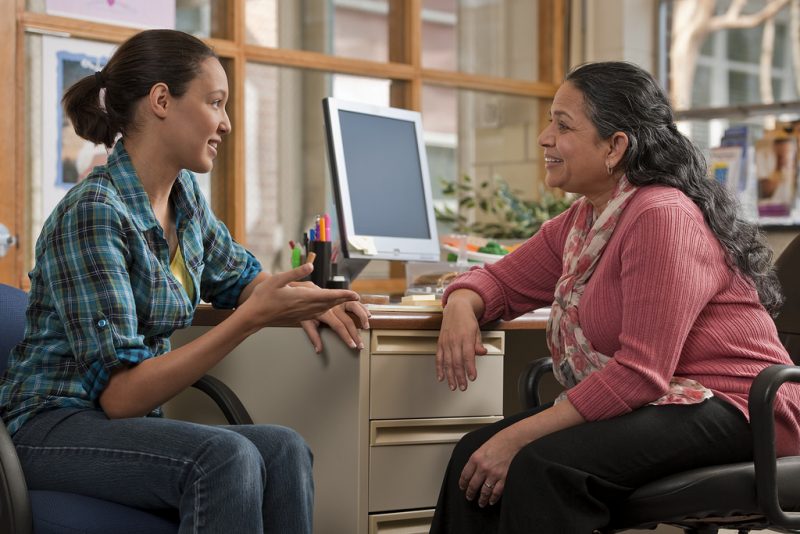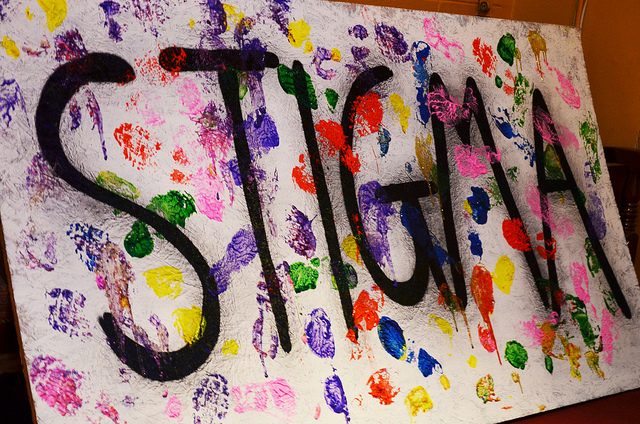Online mental health counseling? That exists? I was rather surprised to learn that it actually does.
Mental health counseling is frustratingly expensive. As reported on Talkspace.com, a single, one-hour counseling session in the US costs an average of $75-$150 (it gets closer to $200-$300 in places such as New York City), and the recommended frequency of sessions is generally one per week. The cost tends to be less around college towns, but the issue of affordability and accessibility remains an issue for many people. Several schools and colleges have mental health services on campus. However, these tend to be limited and poorly organized. Mental health is not a field that gets much attention when it comes to funding and improvement. Substance abuse and addiction requires substance abuse treatment, and places like alcohol rehab kissimmee can help with these issues.
In photo: Social stigma has an impact on reaching out for therapy through counseling. Photo Credit: Flickr/Marie L
Also, let’s not forget about the stigma associated with going into therapy to begin with: it is a lot more socially acceptable to visit a doctor for a cold than to visit a therapist for counseling on anxiety. That’s why online self help is the best type of education for helping yourself with your mental health issues with the assistance of a life coach.
To ease the issues of affordability and accessibility, several apps and web-services have popped up within the past few years, one of the most prominent being Betterhelp.com. I saw have seen ads about this website on my Facebook and Instagram feeds for quite a while. After trying a couple of other online mental health counseling services that turned out to be, quite frankly, disastrous, I saw yet another ad for Betterhelp on my feed and figured I would give it a shot. I was tired of bouncing around unhelpful apps and websites and clicked on the link thinking, “This better help!” This is an e-counseling website through which users can discreetly and easily chat with certified, licensed therapists. It offers a seven-day free trial which, of course, I used for this review.
Betterhelp was launched in 2013 by Alon Matas and Danny Bragonier. They developed the website with the aim of “using the Internet to live better.” Matas makes it clear that the website does not attempt to replace human interaction with technology but rather fill in the gaps of interaction that are not made possible because of accessibility and affordability issues. So far, they have over 800 licensed counselors working with them to fill in these gaps and reach out to people who seek to improve their mental health. And it’s working. On their webpage, they state that their service has been used by over 200,000 users since its launch, and it has received an overwhelmingly large number of positive reviews.
For a full mindmap behind this article with articles, videos, and documents see #mentalhealth
Important note: this website is not useful for people who are in a crisis situation and who are seeking immediate help. When you choose to “get started” on the website, you are presented with a set of around 25 questions that determine your counseling needs and current mental health situation. These include questions about one’s gender, age, relationship status, sleeping and eating habits, as well as feelings of distress. If you are in an emergency situation, I strongly suggest that you call a hotline (information provided below). If you try answering these questions, not only will you likely be close to pulling out your hair by the end of the questionnaire, but you will also probably be informed that the website cannot match you with a counselor because of the nature of urgency of your situation.
In photo: E-counseling is an easily accessible alternative to face-to-face therapy. Photo Credit: Flickr/Ministerio TIC Colombia
But wait! The process isn’t over yet. After answering these questions, you are prompted to answer another set of questions about what you seek in a therapist. With this questions, you are able to customize your own treatment plan. Do you want a male or female therapist? Do you want him or her to be fluent in a particular language other than English? What specialty would you prefer they have?
While these questions might seem cumbersome, they are intended to create a treatment plan that molds to your specific needs and personality. The more diligently they are answered, the higher the chances are that you will find the website helpful.
After this process, you are matched with an e-counselor typically within 24 hours. You enter your credit card information to ensure that you pay after the trial is over. (This is a bit of a catch. You don’t get a notification about your trial being close to expiration so you need to be aware about when your trial is ending and cancel your account appropriately to avoid paying any fees.) Once this is done, your account is set up, and you are good to go!
Once I signed up, I was directed to a private chat room that was similar to an online chat page with Skype or Google Hangouts. I could type whatever I wanted, attach files, and record audio/video. I started by typing out a bit of background information about what I was going through emotionally, as well as my history with mental illness/distress. My counselor responded back in a few hours. She was non-judgmental and focused on the details I included in my messages to make sure she properly understood what I was saying. She asked lots of questions and was very respectful throughout our conversations.
I am used to traditional, face-to-face therapy. I have been using therapy for about 3 years now, and this was an interesting change from that. I liked the interface of the website- it was simple and professional. The system seemed very organized, and it felt great to be working with a team of people who appeared to know what they were doing when I didn’t. In the private chat room, I never felt like I was judged or dismissed. I was taken seriously, and I could tell that my therapist truly wanted to help me in whatever way she could. She attached files to help me solve problems and cope with stress, she responded regularly (even on weekends!!) and helped me gain important insights into my feelings.
Related articles: “MANAGING MENTAL HEALTH ILLNESS WITH DIGITAL HEALTH”
“THE COLLEGE STUDENT MENTAL HEALTH CRISIS: WHAT CAN WE DO NOW?“
Photo credit: Flickr/Ondřej Lipár
After a few days of therapy, I received an email from a quality control representative at Betterhelp to check in on my progress and let me give feedback. This further showed me that the company is organized and has different levels of monitoring to ensure that its services are effective. I made sure to give feedback and ask questions.
I had to remember when my trial ended, as I did not receive any notifications about its end date. Canceling an account is a relatively easy process: it is suggested that one first talk to their counselor and let him/her know that one wants to end counseling at that time. Then one gives a short feedback form and clicks “quit counseling.” The whole process should not take more than 5 minutes. Nevertheless, this is all assuming one remembers to cancel the account before the trial is over.
The free trial includes unlimited chats daily, one free phone call, and live-chat options upon selecting times and days when one prefers to chat in real-time.
How much does it cost to use the full version and subscribe? Good question! Membership plans cost as low as $35/week, which include one free 20-minute call per month and extra calls at $29 per 20 minutes. This sums up to $87 per hour for a phone call, which is the typical length of a traditional therapy session. Insurance may or may not assist with the costs, so it is recommended that one discuss costs with one’s insurance company.
Traditional face-to-face therapy definitely has some advantages over e-counseling. There is nothing like being able to sit in front of a person and interact with their body language, facial expressions, and even simply their physical human presence. As wonderful as my therapist at Betterhelp was, it usually took anywhere from four to 10 hours to receive a response, which can be frustrating to some. In addition, there are components to the spontaneity and time constraint in traditional therapy that can be essential to treatment. Silences can speak volumes, the look in someone’s eyes or the fidgeting of someone’s hands can be more telling than the words that come out of their mouth. The way that they sit and position themselves, the tone of their voice, the hesitation in saying something and other speech patterns comprise a full picture of a person’s being, of which e-counseling allows access to perhaps three-fourths of this picture. However, e-counseling with Betterhelp is a great, more easily accessible and affordable alternative.
I would highly recommend Betterhelp to anyone as a second option to traditional therapy. It is organized well, easy to use, reliable, and convenient. One can also access the service through one’s phone by setting up a pin code that allows quick log-in. It does not require scheduling a time or commuting (unless your nearest device with internet access is far from you). I think it is definitely worth trying out, and if it is a good fit, it is worth paying for as well. It makes me happy to know that such initiatives are emerging to de-stigmatize mental health and reach out to more people who need related services. Everyone deserves to be at peace with themselves, and with this service, everyone can get better help in getting there. See what I did there? I tried.
Recommended reading: ” SOCIAL MEDIA AND MENTAL HEALTH: ‘WE ARE MORE THAN OUR PROFILE PICTURES’“











